 Connecticut is a small state and as such the average number of total camps that worked there is small at just 13 according to Merrill in Roosevelt’s Forest Army. In 1937 the total stood at 17 camps, which sorted out thusly: 13 CCC camps were on state forests, 3 CCC camps were on private forests with a single CCC camp assigned to a state park. The existence of these camps meant more than 30,000 Connecticut men received work as a result of the CCC, including some 28,447 junior and veteran enrollees and 2,223 non-enrolled camp personnel.
Connecticut is a small state and as such the average number of total camps that worked there is small at just 13 according to Merrill in Roosevelt’s Forest Army. In 1937 the total stood at 17 camps, which sorted out thusly: 13 CCC camps were on state forests, 3 CCC camps were on private forests with a single CCC camp assigned to a state park. The existence of these camps meant more than 30,000 Connecticut men received work as a result of the CCC, including some 28,447 junior and veteran enrollees and 2,223 non-enrolled camp personnel.The 1937 Annual Report of the Director of Emergency Conservation Work includes a state-by-state monthly breakdown of the numbers of enrollees by state. Connecticut’s enrollment for fiscal year 1937 shaped up like this:
July 1936: 3,842
August 1936: 3,571
September 1936: 2,433
October 1936: 3,122
November 1936: 2,891
December 1936: 2,718
January 1937: 3,090
February 1937: 2,907
March 1937: 1,920
April 1937: 2,378
May 1937: 2,143
June 1937: 1,887
Remember that these monthly totals reflect the number of men who enrolled in the CCC in Connecticut on a monthly basis, not the number of enrollees actually working in Connecticut month-to-month.
For the roughly $20.7 million spent on CCC work in Connecticut, the state gained 123 bridges of all types, 9 new lookout towers and over 1,000 acres of public camping and picnic grounds, among other improvements. Also according to Merrill, every CCC camp in Connecticut was named after a prominent person on either the state or national level.
There’s a very interesting point about the CCC buried in Merrill’s description of work in Connecticut. He notes that the Emergency Conservation Work (ECW) law did not make provision for construction of roads, the Forest Service referred to them as “truck trails.” Construction of such “truck trails” would be an important part of CCC work, not just in Connecticut but nationwide.
For a very recent CCC Resource Page post on the CCC at Natchaug, click here. Since that post was made, I’ve found out little about the CCC bridge over the Natchaug River.
Author Marty Podskoch has created a terrific website devoted to the CCC in Connecticut. To see a video of Mr. Podskoch giving a presentation on the CCC in Connecticut, click here.
Perry Merrill’s rundown of CCC work in Connecticut refers to the 1936 dam break above Hartford and the subsequent flooding. Merrill notes that “immediate help by CCC enrollees cleaned out 2,950 buildings and over 800 other structures.”
The 1936 flood was clearly a significant event in Connecticut history and there are ample resources online if you’re interested in more background. Connecticut History Online has a nifty
 few pages devoted to the flood of 1936 and the Hurricane of 1938. One photo listed with the 1936 flood information is particularly interesting and captivating because the caption purports it to be a photo of National Guardsmen deployed to help with the flood fight. For my money, those look an awful lot like CCC boys. Sadly, the page doesn’t make any reference to the response of the CCC, though there is a reference to the WPA in the section on suggested further reading.
few pages devoted to the flood of 1936 and the Hurricane of 1938. One photo listed with the 1936 flood information is particularly interesting and captivating because the caption purports it to be a photo of National Guardsmen deployed to help with the flood fight. For my money, those look an awful lot like CCC boys. Sadly, the page doesn’t make any reference to the response of the CCC, though there is a reference to the WPA in the section on suggested further reading.Use the search feature at Connecticut History Online to find two images related to the CCC: an image of Camp Robinson at East Hartford taken in 1935 (who knows, maybe some of those boys helped with flood recovery the next year) and an image of a covered bridge that the CCC helped rebuild. (I’ve cited the copyright data for the photo of the flood response crew used here - above.)
Jump over to Connecticut’s Department of Environmental Protection website to track down a reference to the exact location of Camp Robinson in the Tunxis State Forest.
Connecticut has a museum dedicated to the CCC and to read a terrific blog post about this gem, click here. By all appearances this is a wonderful museum but sadly, I’m unable to find a website dedicated solely to the museum and its collection.
The book Civilian Conservation Corps: A Selectively Annotated Bibliography by Larry N. Sypolt offers up some tantalizing references to both primary and secondary source documents relating to the CCC nationwide and the entries for Connecticut are no exception. Dedicated and resourceful researchers will want to track down Austin Foster Hawes’ article entitled "The C.C.C. Makes Better Men and Forests in Connecticut," published by the State Forester in 1935. Also of interest: Mary E. Pasco’s article “Connecticut Improves Her Trout Streams: Civilian Conservation Corps Inaugurates Pioneer Work in Developing an Important Recreation Asset, published in the February 1934 issue of American Forests.
 Connecticut is the smallest state thus far in our State-By-State rundown of work of the CCC across the United States. In looking at the map and searching for data and pictures, I’m reminded of a disparaging argument often made by revisionist historians regarding the CCC. It’s been argued – though less and less lately – that the CCC benefited the western United States to a greater degree than the eastern United States. I’ve always countered that, since most of the public domain is out west, most of the needed work was naturally in the western U.S. Furthermore, I’ve always pointed out that while more work may have been accomplished in the west (where it was most needed – see previous argument), a lot of the enrollees who performed that work out west came from cities, towns and villages in the eastern United States, consequently the allotments sent home to families didn’t end up in western communities but in eastern cities, towns and villages. You just have to look at a map of Connecticut with the ten CCC campsites highlighted to know that there couldn’t have been enough work to sustain a program like the CCC in Connecticut to the same degree it could be kept busy in Wyoming, Montana or California. One might argue that had it not been for the state forest system in the eastern U.S., the CCC would have accomplished little or no forestry work in this region. (In contrast, the vast tracts of USFS acreage in the west created infinite opportunities for the use of CCC labor.) Perhaps this theme is one we’ll revisit as we explore the work of the CCC in other eastern states.
Connecticut is the smallest state thus far in our State-By-State rundown of work of the CCC across the United States. In looking at the map and searching for data and pictures, I’m reminded of a disparaging argument often made by revisionist historians regarding the CCC. It’s been argued – though less and less lately – that the CCC benefited the western United States to a greater degree than the eastern United States. I’ve always countered that, since most of the public domain is out west, most of the needed work was naturally in the western U.S. Furthermore, I’ve always pointed out that while more work may have been accomplished in the west (where it was most needed – see previous argument), a lot of the enrollees who performed that work out west came from cities, towns and villages in the eastern United States, consequently the allotments sent home to families didn’t end up in western communities but in eastern cities, towns and villages. You just have to look at a map of Connecticut with the ten CCC campsites highlighted to know that there couldn’t have been enough work to sustain a program like the CCC in Connecticut to the same degree it could be kept busy in Wyoming, Montana or California. One might argue that had it not been for the state forest system in the eastern U.S., the CCC would have accomplished little or no forestry work in this region. (In contrast, the vast tracts of USFS acreage in the west created infinite opportunities for the use of CCC labor.) Perhaps this theme is one we’ll revisit as we explore the work of the CCC in other eastern states.For those of you keeping track, this is state number 7 in the State-By-State series. We'll look at the Delaware next. If you’d like to view a previous entry in the State-By-State series, I’ve added each new state name as a label so that it will be listed in the sidebar, alphabetically along with other labels used in this blog. As always, I look forward to input and hope you’ll post comments if you have something to share or feedback concerning how you found this blog or how you used the information posted here.
Image credits: As with all the State-by-State posts, the state map was taken from a larger map published in Stan Cohen's Tree Army. I simply highlighted the camp locations to make it easier to read. The photo of the flood fighting crew is from the Connecticut Historical Society and the photo of Camp White is from Cohen's Tree Army, where it is credited as a USFS photo.

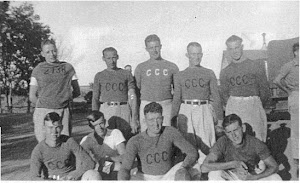

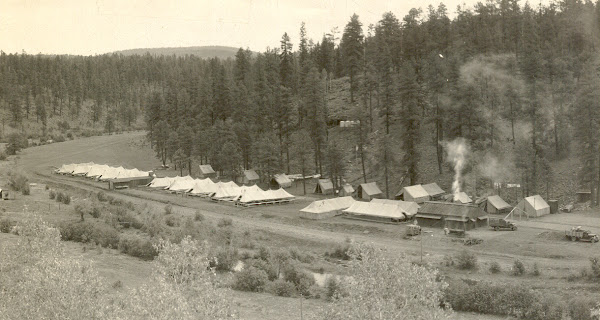
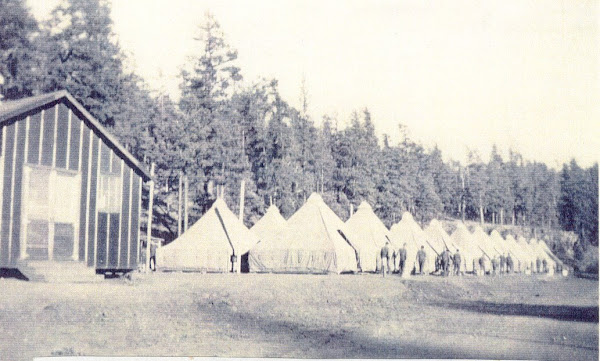
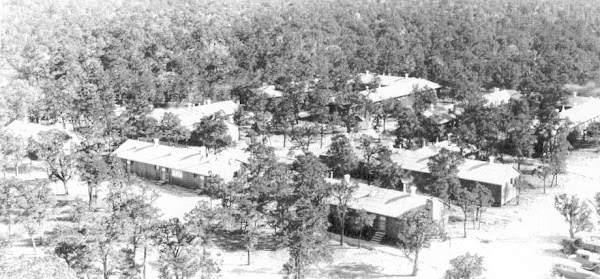
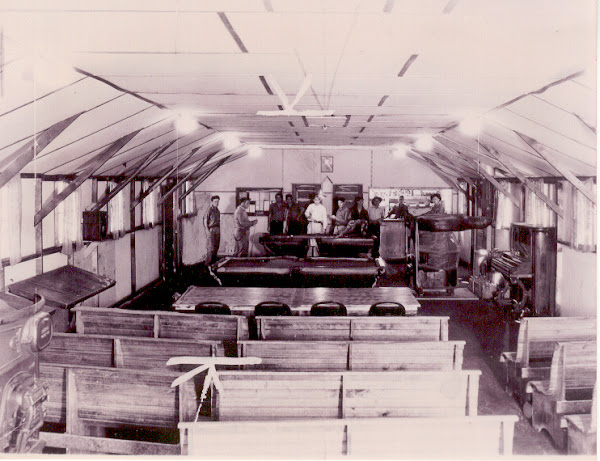
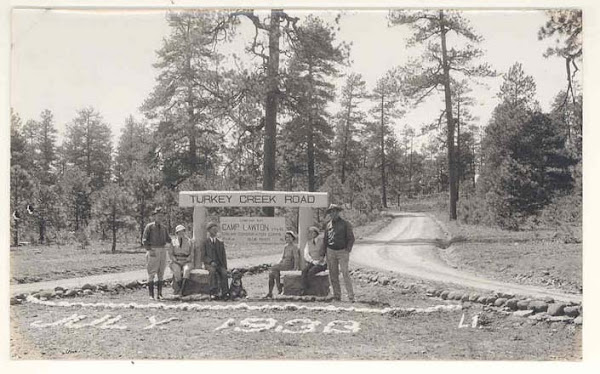
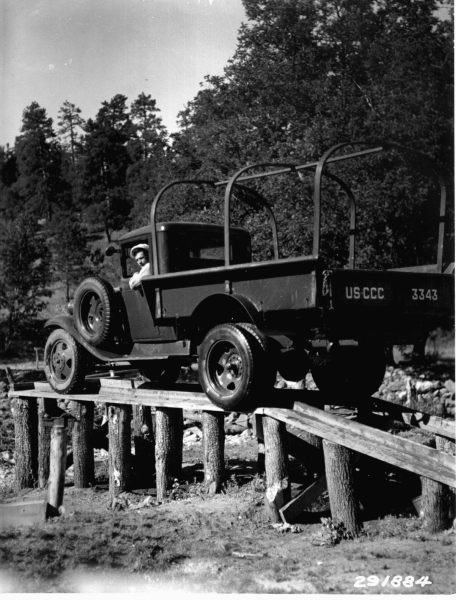
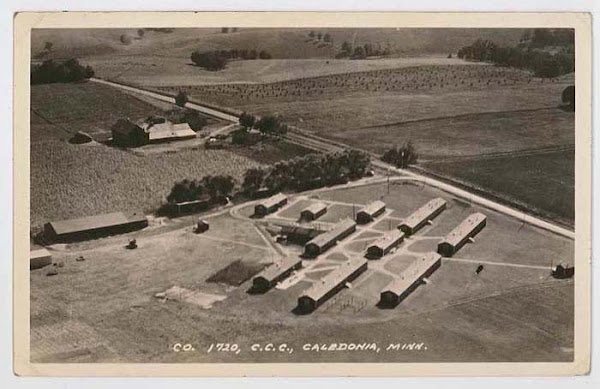
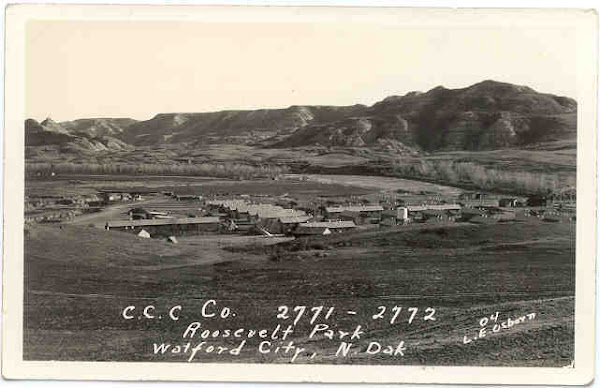
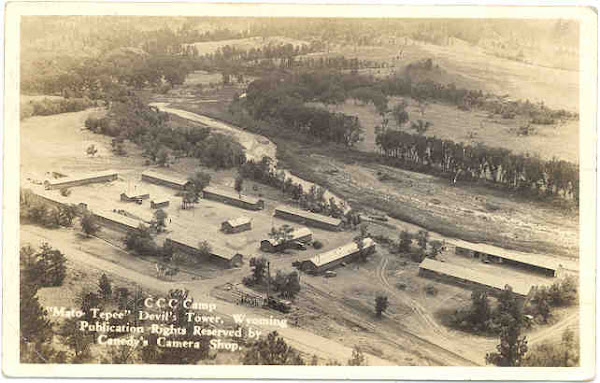
No comments:
Post a Comment